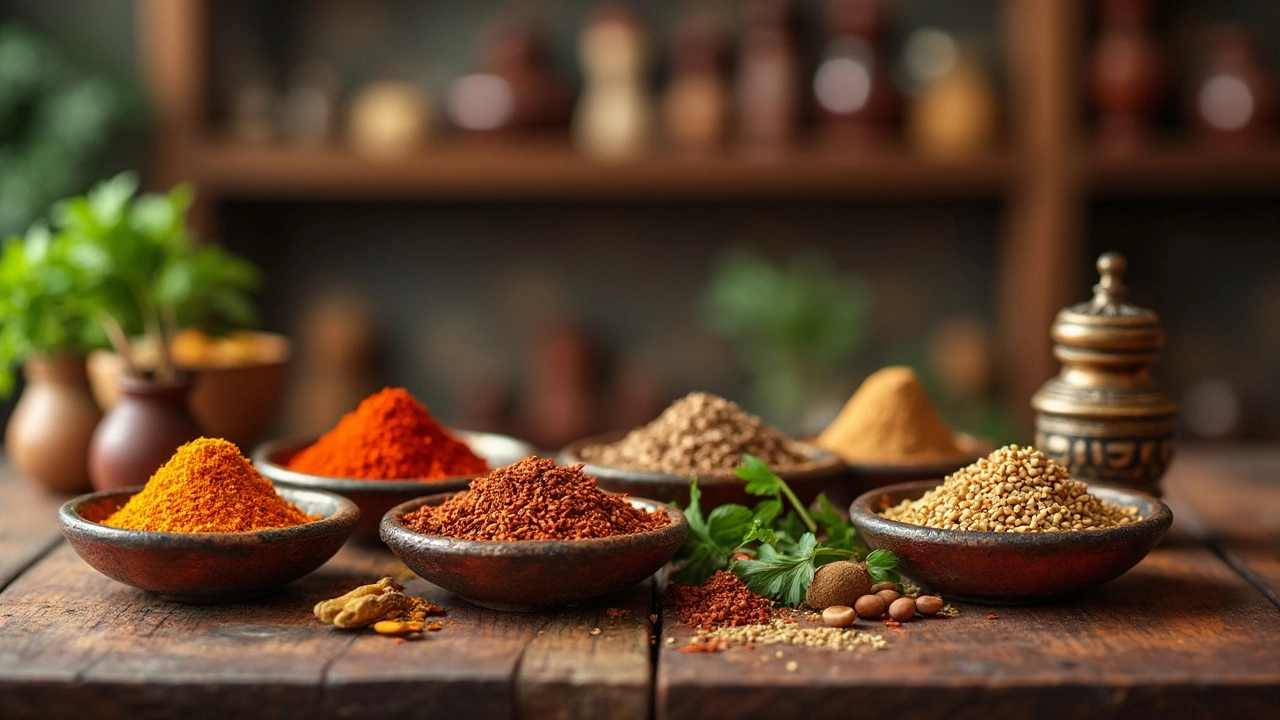Spice Alternatives: Creative Swaps for Indian Cooking
When working with spice alternatives, non‑traditional ingredients that mimic or boost the flavor profile of classic Indian spices. Also known as flavor substitutes, it lets you adapt recipes when a pantry is missing a key spice or when you want a healthier twist. One of the most common swaps involves Turmeric, the bright yellow root that adds earthy depth and color. If you run out of turmeric, a blend of Lemon, acidic citrus that lifts flavors and brightens dishes with a pinch of mustard powder can replicate its zing while keeping the color vivid. Understanding these core relationships helps you keep dishes flavorful without compromising authenticity.
Why Acid and Sweetness Matter in Swaps
Acidic ingredients like lemon do more than add sour notes; they balance rich fats and mellow strong spices. In biryani, a splash of lemon juice keeps the rice fluffy and cuts through ghee, making the whole pot feel lighter. When you replace lemon with another acid—such as tamarind or yogurt—you preserve that balancing act. Tomatoes, juicy fruits that bring umami and mild acidity serve a similar purpose in many curries. Swapping tomatoes for a mix of ground cumin and a dash of vinegar can emulate the depth while keeping the sauce from turning overly sweet. These swaps illustrate that spice alternatives often involve adjusting acidity, sweetness, and aroma together, not just swapping one powder for another.
Another versatile player is Curd, fermented dairy that offers tang and a tenderizing effect. Curd can replace sour spices like amchur or even a splash of lemon in dosa batter, giving the same pH boost that helps fermentation. When you lack curd, a blend of plain yogurt and a touch of vinegar works well, preserving the soft texture and subtle tang. The trick is to match the moisture level so the batter doesn’t become too thin. This shows that many Indian dishes rely on the chemistry of acidity, not just on the spice itself, making curd a key substitute in both flavor and texture.
Practical tips for mastering spice alternatives start with tasting before you cook. Identify the dominant note of the missing spice—earthy, sweet, bitter, or pungent—and then pick a substitute that supplies that note plus any secondary qualities. For turmeric’s earthiness, combine a pinch of smoked paprika with a splash of lemon; for cumin’s warm bite, try coriander plus a dash of ground fennel. Remember that cooking method matters: roasting a spice before use deepens its flavor, so if you’re swapping raw powders, consider a brief toast in oil. Finally, keep a small cheat‑sheet of your favorite swaps; it speeds up decision‑making when you’re in a hurry and ensures consistent results across dishes.
Now that you’ve got a solid grasp of how lemon, turmeric, tomatoes, and curd can stand in for each other, you’ll find it easier to adapt classic recipes to what’s on hand. Below you’ll see a curated list of articles that dive deeper into each swap, explain why they work, and give step‑by‑step guidance for real‑world cooking. Whether you’re tweaking a biryani, rebalancing a curry, or perfecting a dosa, these resources will help you turn any pantry limitation into a flavor opportunity.

What's the Closest Spice to Curry Powder?
Curry powder is essential to many Indian dishes, but what if you're out of it? Discover the best spice alternatives to curry powder, focusing on ingredients that match its flavor profile closely. Learn how to adapt your chicken curry recipe without losing that beloved taste. Dive into the world of spices and find out how cumin, coriander, or garam masala can step into the spotlight when curry powder is missing.